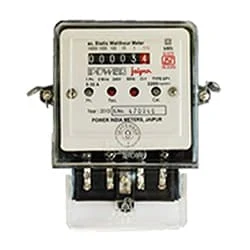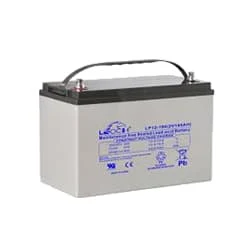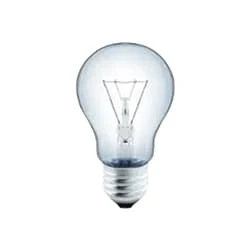House wiring with Inverter
House wiring with Inverter:
This diagram shows how to connect house wiring with the inverter. In this circuit diagram, we want to explain to you how to connect an inverter with a house load and power source connection. In this diagram we use 2 lights, 2 fans, 1 single-phase energy meter, Inverter, a 12V battery, some switches, sockets, and regulator, a DP MCB, etc. For more details please check our youtube video in below.
Diagram of House wiring with Inverter wiring:
Components Need for this Project:
You can get the components from any of the sites below:
- Single Phase Energy Meter [See Buy Click Amazon]
- DP MCB [See Buy Click Amazon]
- 12V DC Battery [See Buy Click Amazon]
- Switch [See Buy Click Amazon]
- Socket [See Buy Click Amazon]
- Ceiling Fan [See Buy Click Amazon]
- Light [See Buy Click Amazon]
*Please note: These are affiliate links. I may make a commission if you buy the components through these links. I would appreciate your support in this way!
$ads={1}
Read Also:
Components used to make the House wiring with Inverter:
01. Single Phase Energy Meter
 |
| Fig 2: Single Phase Energy Meter |
The measuring device with the help of which the electric power or energy of a circuit is measured is called Energy Meter (Energy Meter). Also called a watt-hour or kilowatt-hour meter. For home appliances, we used a single-phase energy meter. The single-phase energy meter is directly connected between the line and the load. Both coils produce their magnetic fields, when the meter is connected to the supply line, and the load. Energy meters are used in homes and in industrial applications where we want to found that how much energy is being consumed by home appliances and electrical equipment.
02. DP MCB
 |
| Fig 3: DP MCB |
Double pole MCB can control two wires. This circuit breaker is generally used in single-phase electric lines. Double pole MCB circuit breaker input has two wires supply two wires and an output. In a single-phase line, A double-pole MCB circuit breaker is used to give good production. This circuit breaker is provided through phase and neutral circuit breaker, it is very safe. This circuit breaker is preferred for home appliances. A DP MCB usually trips for 2 reasons 1. Overload 2. Short circuit.
03. 12V DC Battery
 |
| Fig 4: 12V DC Battery |
A 12-volt Battery is an Irregular Battery used in Specific Electronic Applications. Of all the types of Batteries, the 12-Volt Battery is one That Looks Very Different Depending on its use. It can be Large or small, Heavy or Light. Twelve-volt batteries are commonly used in RV, Boat, and Other Automobiles Systems. From a Technical Perspective, a Battery Uses one or more cells to Allow a Chemical Reaction Creating the flow of Electrons in a Circuit.
04. Switch
 |
| Fig 5: Switch |
A Single-Pole, Single-Throw (SPST) Switch. It's Got one Output and One Input. The Switch will Either be Closed or Completely Disconnected. SPSTs are Perfect for on-off Switching. They're also a Very Common Form of Momentary Switches. SPST Switches are Commonly Used in a Variety of Electrical Circuits and Applications, Such as Turning on And off Lights, Fans, and Other Appliances. They can Also be Used to Control the Flow of Electricity to Different Parts of a Circuit or to Switch Between Different Circuits Altogether.
05. Socket
 |
| Fig 6: Socket |
A socket is a type of equipment used in electrical wiring lines that always has an electrical connection. According to the need, it can be supplied to the electrical equipment. In case of electric iron, electric hand drill machine and electric hand grinder etc. two-pin socket with earth terminal is used. Also, three-pin sockets are used for electrical appliances that have a metal body and are likely to be electrified. Eg – Refrigerator, room heater, table heater, hot-plate, electric oven etc.
06. Ceiling Fan
 |
| Fig 7: Ceiling Fan |
The main driving force behind all ceiling fan systems is the motor used inside the fan. We can also compare it with the soul of a fan. This motor converts the supplied electrical energy into mechanical energy which turns the ceiling fan and gives us air. When current is supplied, the magnetic field formed on the positive half-cycle becomes the reverse magnetic field on the next negative half-cycle. The magnitude part does not rotate and the capacitor is converted to a phase when it is connected to a phase motor or ceiling fan with a helical coil or stationing coil. When power is supplied there is a magnetic difference between the phase currents and the coils (acting as two phases) so that the motor or fan rotates.
07. Light
 |
| Fig 8: Light |
CFLs work in a completely different way from ordinary lamps, they work by using a different process called fluorescence rather than generating light from heat. A typical light bulb wastes 90% of energy and converts only 10% of energy into light, this is where CFL has the biggest advantage. CFL- Curved or conical glass tube filled with argon and a small amount of mercury vapor. The inner wall of the glass is coated with fluorescent material. CFL- It is manufactured using the principle of creating fluorescent light. CFL- Originally white in color but now the construction and use of CFLs producing colored light has become popular.
Thank You for visiting the website. Keep visiting for more Updates
$ads={2}
Frequently Asked Questions
Can a power inverter power a house?
By connecting an inverter to a battery and a renewable energy source such as solar panels, you can generate an AC power supply to run your household appliances. However, the capacity of the inverter and the battery or power supply source will determine how much of your house's electrical load can be powered.
Can I run my whole house on an inverter?
To put the question to rest once or for all, we use this blog to bust the number one myth around inverter backup systems. No, an inverter battery could not provide backup for the entire home, especially in the 21st century where houses are chock full of gadgets that need electricity to run.
What size inverter will run a house?
With the total load calculated, we recommend that you select an inverter size twice the total wattage of the devices you will be running on the inverter so that you have a safety margin or do not run the risk of overloading. If your total load is 1200 watts you would choose an inverter of the size of at least 2400 watts.
Will a 5000-watt inverter run a house?
Also, this 5000w hybrid solar inverter 10-hour home conversion system offers a 3.5kwh battery storage to power supply your home during night time. So you will have enough power to cover most of your home or business's energy usage. It's making this a perfect starter of the system for most residential applications.
How much battery is sufficient for a home inverter?
As a rule of thumb, the minimum required battery capacity for a 12V system is around 20 % of the inverter capacity. For 24-volt inverters, it is 10 %. The battery capacity for a 12V Mass Sine 12/1200, for instance, is 240 Ah, while a 24-volt Mass Sine 24/1500 inverter should require at least 150 Ah.
You may like these posts















Post a Comment
Do leave your comments